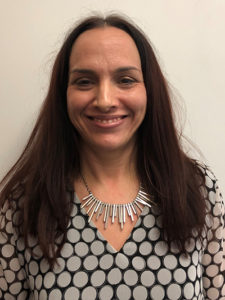The transition from adolescence to adulthood is an important and transitory juncture in the lives of modern young individuals. This exciting and oftentimes anxiety-inducing time brings with it a host of challenges: increased independence, heightened self-awareness, the taking on of more personal responsibilities, and a marked change in the expectations or practices of social engagement. This last area, however, potentially poses a greater threat to the development of positive self-identity for young individuals with Autism Spectrum Disorders (ASD) and related learning differences, as the pressure to navigate changing and varied social contexts yields many opportunities for, colloquially, putting one’s foot in their mouth or engaging in a manner unbecoming of expected social practice. As Volkmar, Reichow, and McPartland note, “research does suggest that having good social skills and adequate social support relate to better quality of life in adults with ASD” (2014, pg. 64). Thus, it is important to consider how support systems can help supplement this crucial developmental opportunity by providing scaffolding for individuals to allow them to find social success beyond the scope and relative safety of their social program.

Samantha Feinman, MSEd, TSHH

Braden Winslow, BA
The effects of ASD-related social pragmatic deficits can play out in several ways, including lagging skills in social communication, social cognition, and the recognition or understanding of social cues. These can manifest in equally disparate ways person-to-person, from an individual talking about only the topics that interest them, dominating a conversation and not allowing space for reciprocity, to apparent obliviousness to the interest levels of the other conversationalist(s) involved in an interaction. Breaking down these barriers of social communication for young adults with ASD, while still encouraging growth, requires a balance of pushing individuals outside of their comfort zones, establishing accepted boundaries for conversation, and using perspective-taking opportunities to draw attention to the response yielded by certain rhetoric or conversation topic. These approaches are only a small sample of strategies used by support networks to foster an individual’s growth in their social skill set, but any utilized tactic for most situations should take care to be applied in a manner that seeks to meet the student where they currently are skill-wise, as opposed to attempting to fit square pegs into round holes. It is more advantageous for support networks to try and develop a positive self-identity for the individuals being supported as the starting point from which they achieve the desired social growth. Hence, this skill development should typically aim to be ecologically valid in its approach, concerning “those behaviors that are naturally exhibited by socially accepted adolescents or adults in a given social context” (Volkmar, Reichow, & McPartland, 2014, pg. 66). In so doing, support networks for ASD-related individuals strive to bolster the development of social communication in a way that doesn’t negate or erase the importance of the individuals’ self-identity, but establishes certain patterns of social behavior as existing closer to what we consider “typical” or “expected,” which will ideally lead to more success for these individuals in navigating the milieu of interaction in academic, extra-curricular, or professional contexts.
We have found through our Summer and Winter in the City group programs, which take participating students on a series of day-trips and outings around New York City for two weeks, that New York City serves as a uniquely rewarding locale for developing social skills organically. Participants have the chance to develop authentic and translatable social skills in a city that provides many opportunities for various activities, cultural immersion, differing sensory inputs, and a unique element of randomness. Unforeseen challenges and teachable moments supplement the students’ social skill-building. “The person who has heightened sensory sensitivity may perform well in a low-stimulation environment but become physically uncomfortable… in an environment that has too many irritants. The problem and the solution are not within an individual, but rather in the person-environment fit” (Gobbo & Shmulsky, 2010, pg. 3). Additionally, “a person who is taking public transportation from one point to another has to read the schedule and signs around him or her, provide payment for the use of the transportation, maintain safety while interacting appropriately with others, and observe their community to identify their stops. All of these activities involve academic skills that are embedded in functional tasks” (Volkmar, Reichow, & McPartland, 2014, pg. 45). Thus, individuals have the potential to develop authentic social skills by testing their boundaries and building skills around navigation, decisiveness, regulation, budgeting, and more in addition to those that occur in the social context.
Before any skill improvement can occur, there must exist buy-in from individuals at the center of any ASD skill development support group. To help spur engagement and interaction, participants should be encouraged to take an active role in planning out which activities, sights, and experiences the group explores. This should be achieved collaboratively by the entire group, which provides participants the opportunity to be confronted with differing opinions, disparate interests, and disagreements on what the group should do. Navigating these common social occurrences in the context of a group that shares similar social obstacles enables participants to learn in a judgment-free space that helps define for how they choose to fit into the mold of expected social behaviors. Furthermore, as participants begin to deepen their relationships with their peers, they may begin to self-impose the decorum of social interaction and spur that process in each other, yielding a dynamic that further allows for social skills and communication development in consideration of the aforementioned ecological approach: “If the goal is to teach socially motivated adolescents and adults with ASD how to interact effectively in a neurotypical world, then understanding the ecologically valid social customs of the dominant peer group is essential” (Volkmar, Reichow, & McPartland, 2014, pg. 67). Thus, by manufacturing a peer group for participants, they may obtain the necessary social skills development outside of the vacuum of simply talking about or practicing skills one-on-one. This gives the opportunity to bolster that development in context of a larger group that can establish its own accepted and expected behaviors, as well as providing social feedback in real-time, ideally avoiding the “square peg, round hole” conundrum.
The larger context of group-driven social programming allows students to improve their social awareness via interaction with each other, providing the potential for social “hiccups” that students learn to navigate. For example, a participant may insist upon not talking about politics or religion at all, as she has perhaps compartmentalized these topics as being inappropriate for social engagement, since they oftentimes lead to disagreement or conflict. Another participant, however, may only want to talk about politics or religion, which presents a clear opportunity for skill-building for both students. An effective approach to getting around this potential social obstacle is to challenge the latter participant to not talk about politics/religion at all, and to try and find other topics that don’t alienate certain members of the group. Conversely, the politics/religion-averse participant learns to regulate her reactions to the politics/religion-centric participant’s choice of conversation topic. Subsequently, both individuals can come to a greater understanding of their unique social perspectives in the context of the group (and perhaps society at large), ideally walking away with a deeper appreciation for themselves and their capacities. Suffice to say, if ASD support networks can provide the scaffolding for individuals to develop positive self-identity, social, and communication skills, then we will have done our part to foster their growth and ease their eventual integration into society, in turn giving them the tools necessary to find success in the long-term.
Braden Winslow, BA, Coach, and Samantha Feinman, MSEd, TSHH, Director, New Frontiers in Learning, can be reached at info@nfil.net or 646-558-0085.
References
Gobbo, K., & Shmulsky, S. (2016). Autistic Identity Development and Postsecondary Education. Disability Studies Quarterly, 36(3). doi:10.18061/dsq.v36i3.5053
Volkmar, F. R., Reichow, B., & McPartland, J. C. (Eds.). (2016). Adolescents and Adults with Autism Spectrum Disorders. Retrieved February 25, 2019, from https://www.springer.com/us/book/9781493905058




